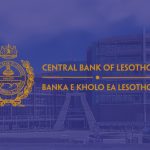
Monetary Policy Committee (MPC) Statement of the 14th April, 2020
April 14, 2020
Monetary Policy Committee (MPC) Statement of the 28th July, 2020
July 28, 2020The Monetary Policy Committee (MPC) of the Central Bank of Lesotho (CBL) held its 83rd meeting on the 22nd May 2020. During this meeting, the Committee considered international, regional and domestic economic developments and financial markets’ conditions, to determine monetary policy action that is appropriate for executing the CBL’s primary mandate of maintaining price stability.
Global economic activity is expected to slow in the first quarter of 2020. Following a broad-based improvement in the previous quarter, economic growth in the first quarter was negatively affected by the global spread of the COVID-19 pandemic and associated infection control measures undertaken around the globe. This is despite unprecedented monetary and fiscal policy easing by countries including the US and China. Labour market gains in advanced economies have been reversed and show signs of further deterioration. Downside risks to the global economic outlook remain prominent and emanate mainly from the continued spread of the coronavirus, a reescalation of trade and geo-political tensions, and other country-specific factors.
Inflationary pressures largely subsided in advanced economies. In the US, the Euro Area and Japan, rates of inflation decreased, while it remained unchanged in the UK. The monetary policy stance remained accommodative across advanced economies, with rates in the US, the Euro Area and UK kept close to the zero lower bound.
Economic activity in emerging market economies, including China and South Africa, has remained generally low, mainly on account of the COVID-19 and other countryspecific factors. China’s economic growth decreased by 6.8 per cent in the first quarter of 2020. In South Africa, COVID-19 infection control measures and low business confidence are expected to undermine growth prospects in the medium term, while risks to long-term growth are expected to emanate largely from structural challenges. The annual rate of headline inflation, measured by changes in the consumer price index (CPI) for all urban areas, was recorded at 4.1 per cent in March 2020, down from 4.6 per cent in February 2020.
Global financial markets are beginning to stabilise with renewed risk taking returning in most markets. Yields in emerging markets, especially South Africa have been rising on the long end and sliding on the short end. The expected result is further depreciation in the exchange rate.
The domestic economy has generally been weak. According to the CBL measure of economic activity, economic performance declined by 0.6 per cent in March 2020, relative to a 0.2 per cent decrease in February. While economic forecasts are likely to change, the economy is expected to contract by 5.7 per cent in 2020 mainly due to COVID-19 infection control measures. In the labour market, there were mixed signals across the three sectors that are monitored by the Bank, there was a decline in employment in both manufacturing and migrant mineworkers, consistent with lower demand for some of the large firms’ products in South African and overseas markets, while government employment improved slightly.
The rate of inflation, measured by year-on-year percentage change in consumer price index (CPI), decreased from 4.2 per cent in February 2020 to 4.0 per cent in March 2020. This was mainly due to a lower increase in the prices of the following categories in the basket; Food and non-alcoholic beverages, Clothing and footwear, Housing, electricity, gas and other fuels and Furnishings, Education and Transport.
Money supply, as measured by M2, increased by 3.2 per cent in the quarter ending March 2020, following an increase of 0.2 per cent in February 2020. The increase was realised in both the net foreign assets and net domestic claims. Private sector credit increased by 4.5 per cent in March 2020, compared to an increase of 0.02 per cent in February 2020.
The balance of payments position improved in the first quarter, on account of a decline in the trade account deficit together with a higher surplus in the primary and secondary income accounts. Consequently, gross international reserves rose to 4.7 months of import cover from 4.3 months in the previous quarter.
Government budgetary operations were estimated to have realised a fiscal surplus of 4.8 per cent of GDP in March 2020.
In summary, global economic activity remained under pressure in the face of growing risks to the economic outlook that include the spread of the COVID-19 as well as reescalations of geo-political and trade tensions. Domestically, growth also remained subdued. Risks to the domestic economic outlook include the possible spread and the infection control measures of COVID-19, exposure to international economic developments, domestic structural rigidities and policy uncertainty.
Having considered the NIR developments and outlook, regional inflation and interest rate outlook, domestic economic conditions and the global economic outlook, the MPC decided to:
- Reduce the NIR target floor from US$660 million to US$530 million. The NIR target remains consistent with the maintenance of the exchange rate peg between the loti and the South African rand.
- Reduce the CBL rate from 4.25 percent per annum to 3.75 percent per annum. The rate, set at this level, will ensure that the domestic cost of borrowing and lending will be aligned with the cost of funds elsewhere in the region.
The Committee will continue to monitor the global developments and their likely impact on domestic macroeconomic conditions, especially the CBL net international reserves (NIR), with the aim of taking corrective action when needed.
A.R. Matlanyane (PhD)
GOVERNOR
Contact Person:
Ephraim Moremoholo +266 22232094
emoremoholo@centralbank.org.ls

